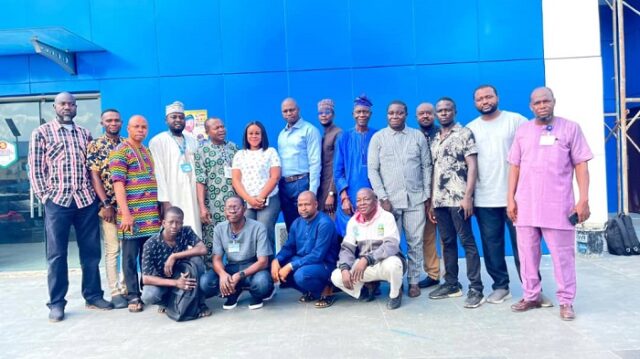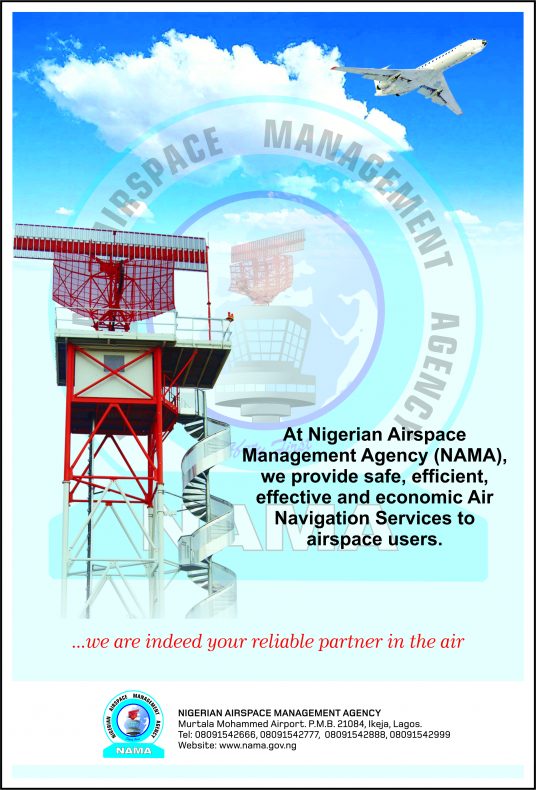
The Nigerian Airspace Management Agency (NAMA) has launched a two-week on-the-job training for Air Traffic Safety Electronics Personnel (ATSEPs). The focus is on technical staff capacity building across various aviation infrastructure power systems.
The initiative, which began this week, is taking place concurrently in Lagos, Abuja, and Kano. According to Director of Public Affairs and Consumer Protection, Abdullahi Musa, the training spans all NAMA facilities managed by the Department of Communication, Navigation, and Surveillance Power Systems.
Importantly, the training was introduced to physically immerse trainees in practical learning. Participants will gain hands-on experience with equipment and procedures under direct supervision. They will work with seasoned professionals to better understand installation, maintenance, and systems operation.
Trainees will study key facilities including Automatic Mains Failure (AMF) systems, Automatic Voltage Regulators (AVR), Uninterruptible Power Supply (UPS), and Solar Power Systems. Others include electrical installations, cooling systems, and generating sets, all critical to sustaining operational integrity.
As part of the structured training, ATSEPs will also be exposed to practical sessions in welding and air-conditioning system maintenance. They will learn how to top refrigerants, install cooling components, and handle complex solar power setups.
Participants will carry out preventive and corrective maintenance on UPS, inverters, AVRs, and even overhaul large generating sets. These efforts align with the agency’s goal to build a more robust and responsive technical team.
Speaking during the training flag-off, Managing Director of NAMA, Engr Farouk Ahmed Umar, emphasized the program’s significance. He explained that the training is a product of NAMA’s renewed drive for technical staff capacity building.
Engr Farouk stated, “This training is necessitated by management’s commitment to increasing the capacity of our technical and operational staff. It is essential to ensure our communication, navigation, and surveillance infrastructure across Nigeria continue to perform seamlessly, efficiently, and optimally.”
He added that aligning the agency’s workforce with international standards was crucial. “We are doing this to comply fully with the International Civil Aviation Organization Standards and Recommended Practices (ICAO SARPs),” he said.
Furthermore, the NAMA boss expressed confidence that the training would have tangible safety outcomes. According to him, a properly trained technical team would play a key role in ensuring uninterrupted power supply at NAMA’s critical installations.
“Ultimately, the knowledge gained here will strengthen safety assurance in Nigerian airspace,” he noted.
The training has been met with positive reception from personnel on the ground. Many praised the hands-on approach, describing it as a step forward from purely theoretical sessions.
One of the participants from the Lagos station commented, “This is what we’ve been waiting for—real work experience. We are learning with the actual systems we’ll be managing in the field.”
It is worth noting that this training reflects NAMA’s proactive posture under its current leadership. With air navigation systems heavily reliant on power stability and hardware reliability, regular skill upgrades have become a necessity.
Additionally, sources within the agency revealed that similar initiatives will be repeated quarterly. This will ensure that ATSEPs across all stations maintain optimal efficiency levels.
In summary, the training represents a new chapter for NAMA’s technical staff. It demonstrates the agency’s sustained commitment to aviation safety and compliance with global standards.
The ongoing exercise also reinforces NAMA’s broader strategy of technical staff capacity building—placing Nigeria’s airspace operations in a strong position to handle future growth and emerging technology demands.





















